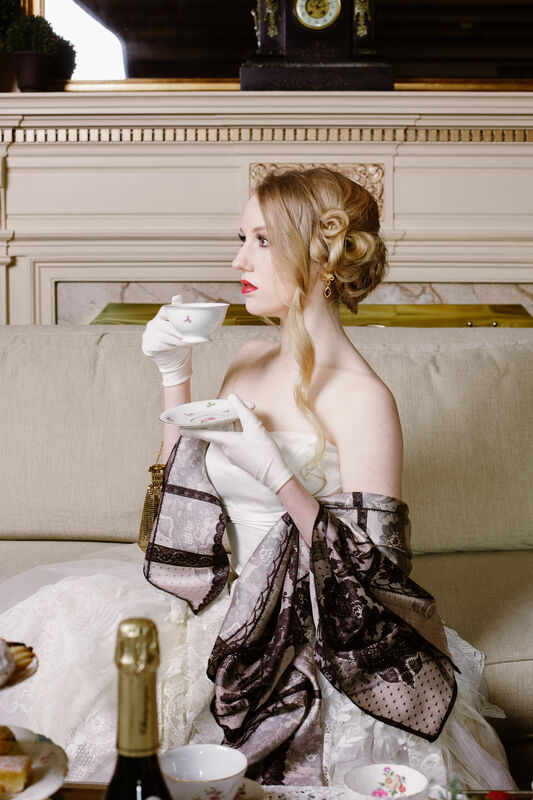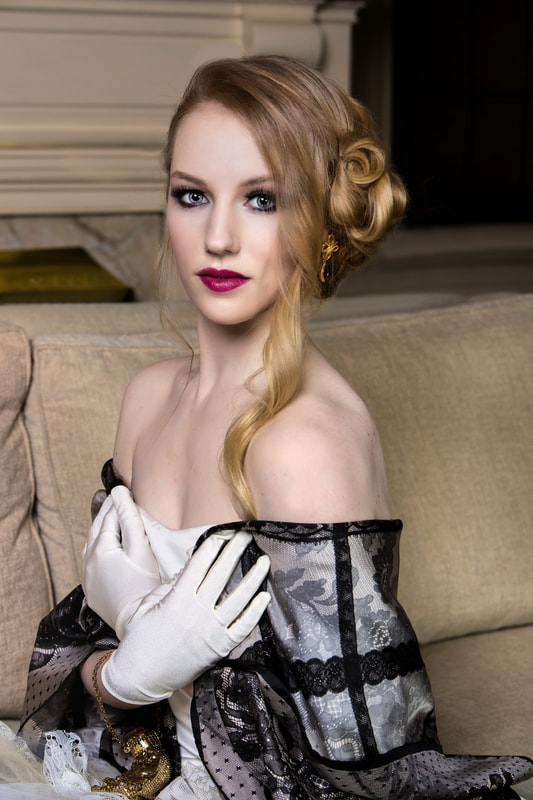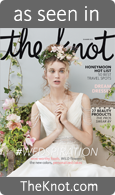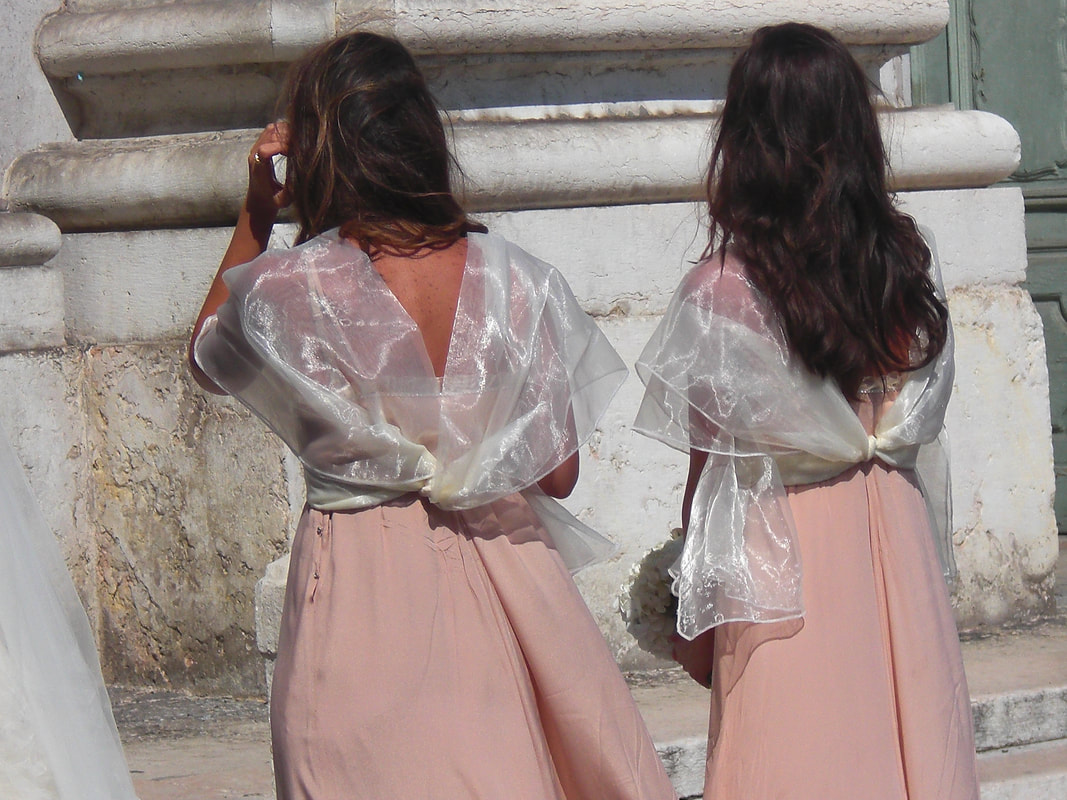Flouncy, transparent, stiff, protective: lace is charged with a myriad of emotions, experiences, meanings, and memories. It’s the fabric of grandmothers, but also a textile of childhood. It’s Lolita’s choice, stranded somewhere between pre-pubescence and womanhood, undeniably feminine, but also historically genderless. Most couturiers and ateliers worth their salt have incorporated the material in some way. Chanel, for example, uses it almost every season: Recently, lace showed up in both casual and formal iterations in the brand’s Resort 2023 collection; in the Spring 2023 show, the brand sent out a knockout column dress of white rose-patterned lace, punctuated by black silk bands at the chest and hips, Jazz Age and Space Age in equal parts.
For Bode designer Emily Bode Aujla, lace traverses the space between home and hand. Generally the production of lace for the body and for domestic use is carried out separately. The brand, which frequently repurposes antique textiles intended for the home into jackets, shirts, and trousers, is the perfect testing ground for this crossover. “I am drawn to domestic textiles, like lace, that were made in the home, for the home,” says Bode Aujla, “The shirts we make from lace carry that weight with them.”
For Bode Aujla, there’s an emotional bent to the adaptation: “I work with lace because as a material it holds so much sentimental value,” she says. “It was so laborious to make and the affiliation with its end use—birth, marriage, holidays, death—is significant.”
These affiliations have an economic weight as well. Before value was communicated through celebrity, it was attached to labor. That is, what required the most skill and the most time to create was the most valuable. In Europe in the 1500s, lace, then a brand new innovation, quickly gained speed as an important social signifier, because the finest, most intricate pieces of the delicate fabric could take expert hands several years to create. At the time, lace was a symbol of power and mobility on the shoulders, waists, or necks of people of note—those who could afford extravagance, those whom extravagance served.
Today, lace inspires notions closer to nostalgia and gendered delicacy than of power, domination, or wealth. We have the means to produce lace without purpose, without outsized demands on time, and without massive workforces. But for many contemporary designers, working with lace is a matter of more than just aesthetics. Bode Aujla points out it’s educational value as well: “Using lace now allows us to teach others of their historical identity,” says Bode Aujla, “Like almost forgotten hand-techniques from a small town in Spain to a Quaker lace pattern named for its use in the dining room of the White House or aboard a ship.”
In Threads of Power, an exhibition currently on view at the Bard Graduate Center in New York City, lace is surveyed in all its dainty glory. Examples of handwork dating from the year 1580 show the development of the craft, from a long late 16th Century linen bonnet with lace inserts to Michelle Obama’s Isabel Toledo Inauguration ensemble made with asparagus-hued Forster Rohner lace. Most of the works on view were loaned from the Textilmuseum in St Gallen Switzerland, one of the richest resources for lace and lacemaking history in Europe, with an archive to rival that of the Victoria and Albert Museum in London. The exhibition is shocking in its breadth, with juicy and surprising facts about the textile’s production, history, and adaptation through time.
On weekends, a lucky visitor can glimpse women from the Brooklyn Lace Guild creating delicate, fanciful examples of both bobbin and needle lace in real time. Their mesmerizing craft feels exceptionally rare in this context, given the dwindling accessibility to new handmade lace at the scale it was once produced. But there is a corner of the fashion world still readily engaged by the centuries old craft: Designers like Akris and Simone Rocha are honoring this heritage with intricate, handmade designs.
For Rocha, lace has been a nearly ever present element in her brand. “Lace has run through different collections over the years,” she says, “the fabrication is so emotive and helps drive the necessary conversation between textile and silhouette.” In her collections, lace is often combined with eyelet and tulle, evoking at different times Elizabeth the Great, the classic goth, and Little Bo Peep. A lace ensemble opened her very first runway show for London Fashion Week in 2012: a mini skirt suit both professional in its silhouette and suggestive in its translucency.
For lace makers and historians, a contemporary understanding of lace is heavily informed by its popularity in past centuries. “Today, very few designers continue to work with handmade lace,” says Elena Kanagy-Loux, co-founder of the Brooklyn Lace Guild and a participant in the exhibition. “Those that do are often drawn to it out of a desire to support the makers of the craft.” It is that labor that brings about a material so emotionally and visually rich. Lace is like trapped air—the clouds in a textile. With it, a human can don the garb of a god, and float weightlessly in a material that carries countless hours of effort. Lace reaches both ends of the spectrum, from innocence to kink, grandeur to humble domesticity"
Lace itself is hard to define, partially due to the manifold versions it appears in throughout history. Unlike other embroideries, lace has no base fabric. Patterns are built instead with loose thread using a variety of techniques. Originally the term “lace” referred to a narrow braid, and later came to encompass all forms of non-woven, knitted, crocheted, and needle-made openwork textiles. Depictions of lace production seen often in early European treatises on the craft generally incorporated “bobbins”, a rotating cylinder, situated at the head of a firm cushion, on which a lacemaker would create her work. But “needle” lace, where the maker sews a pattern onto a backing that is later removed, is also common.
At the Bard Graduate Center, which encompasses several floors of an Upper West Side townhouse, centuries are covered in only a few thousand square feet. Each item chosen for the show is emblematic of lace’s narrative power. Around a corner in a second floor gallery is a bobbin-lace coverlet, made in Italy between 1625 and 1650. Placed within its 47 square inches are symbols relevant to the 1649 wedding of Philip IV of Spain and his niece Mariana of Austria. There are rams’ skins representing Philip’s membership in the chivalric Order of the Golden Fleece and twelve crowned double-headed eagles symbolizing Mariana’s father the Holy Roman Emperor Ferdinand III. A coat of arms is to be found as well, representing Charles V, who was an ancestor to both. On the top floor are several richly embroidered 18th Century French dresses with lace cuffs and collars, along with a bobbin lace collar and point de venise mantelet of Italian origin from around 1700. On the floors below, lace pattern books are opened to pages that show the motifs and directions of early lace makers.
“The beauty of lace is the time that's put into it,” says the artist and designer Laila Gohar, whose homeware brand, Gohar World, created with her sister, Nadia, incorporates the craft in everything from bottle aprons to bonnets for fruit. “During early COVID we couldn’t touch each other. Now, people are yearning for anything made by the hands of a human. Handmade lace is touch indirect.” With the frenzy of modern media choking our every creative impulse, touches of lace in the home or on the skin have a rooting effect. Lace recalls play, dress up, order, and formality at different turns. But it also recalls sex, lingerie, privacy. That duality is what makes the material interesting.
St. Gallen, the small southeastern Swiss town where the Textilmuseum is located, has a thousand year old textile history. It is home to several of the oldest lace making companies still in operation. One company, Jakob Schläpfer, has supplied lace to a staggering number of couturiers throughout Europe since the 1950s: Chanel, Comme des Garcons, Paco Rabanne, Balenciaga, the list goes on. Recent innovations have extended into sequins, silicone lace, and textiles that incorporate jewels in a decidedly Tudor spin, like “trapped pearls” in chiffon. For Akris, which is based in St Gallen, the local lace trade is vital. “There is no Akris collection without St. Gallen embroidery,” says Albert Kriemler, the brand’s Creative Director. “St Gallen embroidery has almost infinite potential. It can be so much more than what you might expect.” Akris, in particular, is known for utilizing the knowledge of their local lace masters to create lace from an architectural perspective. No doilies here! Instead, we see lace with sharp edges, shadows, and even lace spelling out the brand name.
From a crisp, white social signifier to a marker of time and vessel for remembrance, lace has proven to be an extremely malleable, evocative craft, both in its finished state and in its making. “When you see people making lace, it looks like they are playing an instrument,” says Gohar. “Watching their fingers move… it’s poetic and beautiful and musical.” Lacemaking is like magic. Each pattern is a spell of movement and memory, each pattern book a grimoire lovingly maintained and annotated over years. Though what constitutes lace has evolved and expanded with the dawn of technology, its origin remains awe-inspiring. In its infinite variety, lace can stand as an example of how human skill and technology can intermingle fruitfully, with consideration and care at the point of connection.
Post written by by Camille Okhio
11.23.22
https://www.wmagazine.com/fashion/lace-fashion-threads-of-power-exhibition?utm_campaign=11-24-22%20Hailey%20Bieber%27s%20Birthday%20



 RSS Feed
RSS Feed












